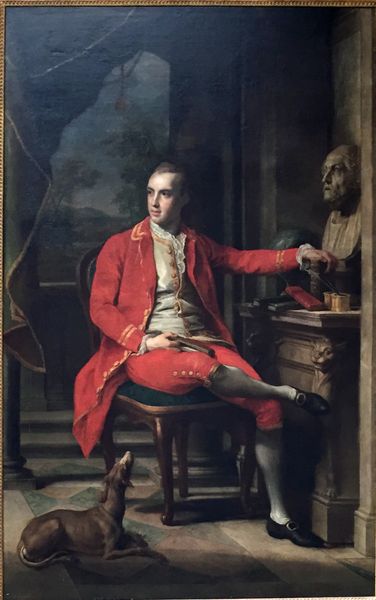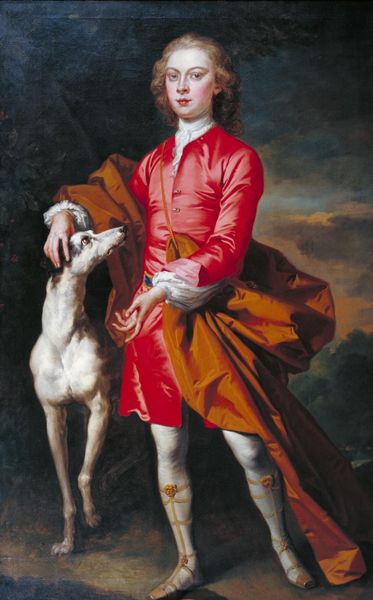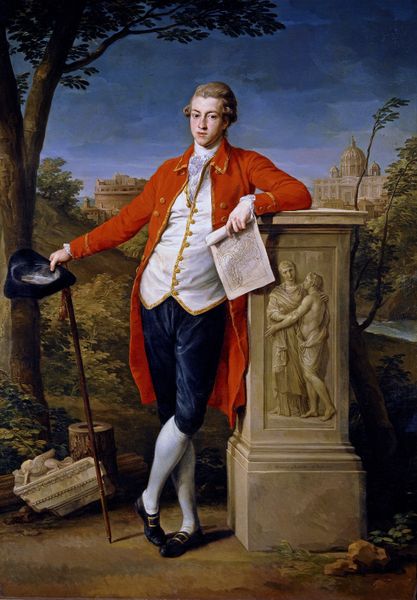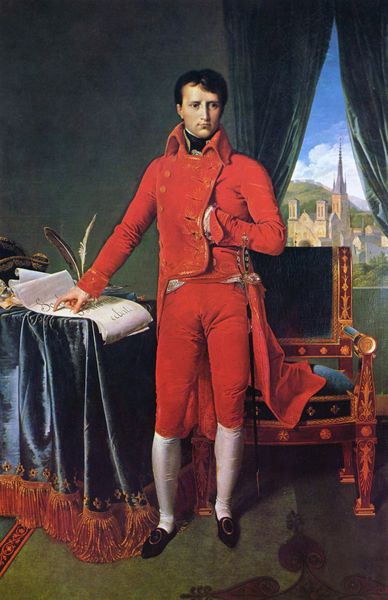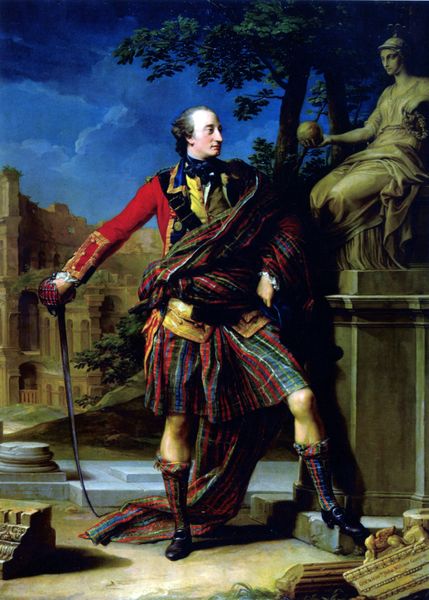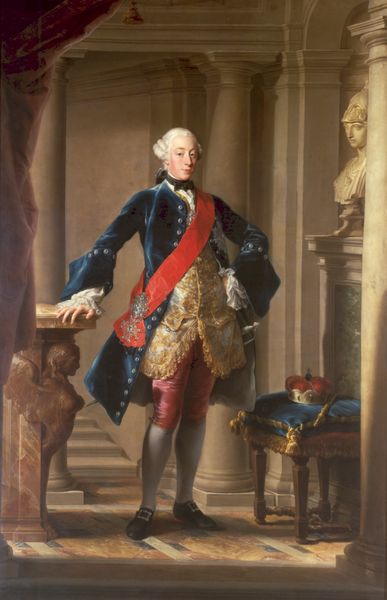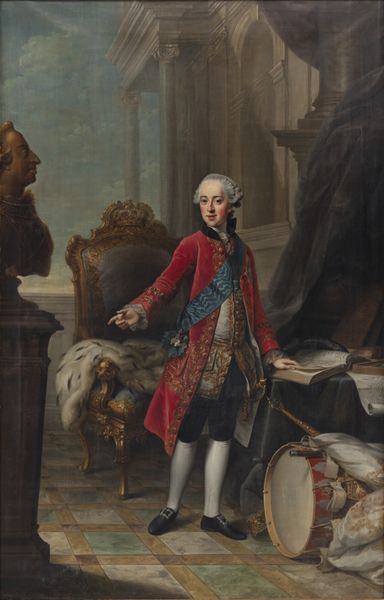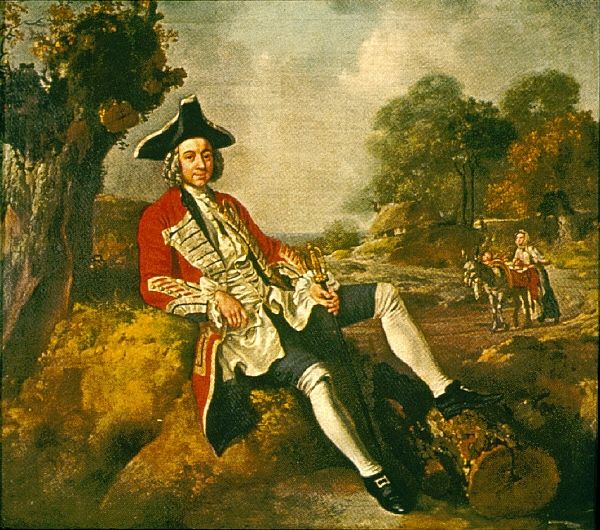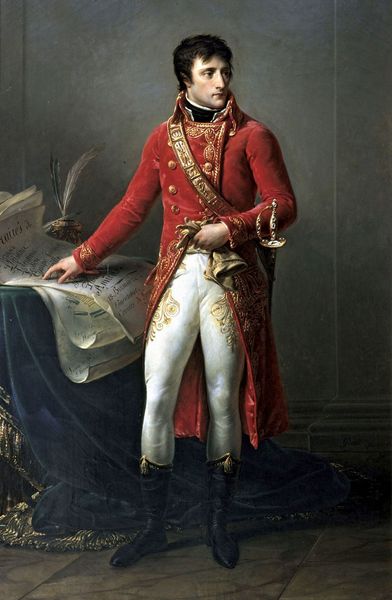
Copyright: Public domain
Editor: So, this is Pompeo Batoni’s portrait of Thomas Dundas, painted in 1764. The sitter's confident pose really makes you notice the red of his suit against the backdrop of classical statues and architecture. What strikes you most when you look at it? Curator: Immediately, the carefully constructed theatre of the scene resonates. Notice how Dundas is placed not merely *with* but *amongst* signifiers of classical virtue and education: statues, columns, even the putti supporting the fountain. It’s not simply about wealth; it's about embodying a certain cultural ideal. What do those symbols communicate to you about the subject’s aspirations? Editor: That he’s trying to align himself with the grandeur of classical antiquity, right? Almost as if he's trying to embody those virtues himself. The statues act as almost supporting roles in this personal drama. Curator: Precisely. And the theatrical gesture, almost directing our gaze? The hunting dog also at his feet, symbol of nobility? All these details meticulously crafted, inviting the viewer to decode them, place Dundas within this narrative of inherited power, newly acquired wealth, and aspirations of the British aristocracy. What lasting emotional or cultural message do you think this composition intended to transmit to his family or to future generations? Editor: That's a lot to unpack, but it's fascinating how the image becomes a curated performance of status. It goes beyond just capturing a likeness. Thank you, this portrait is definitely richer now! Curator: And hopefully richer in meaning for others too! Visual language truly can construct such intricate narratives that shape our understanding of history.
Comments
No comments
Be the first to comment and join the conversation on the ultimate creative platform.
